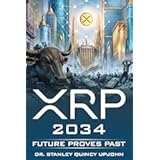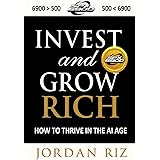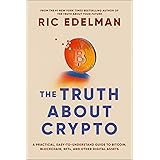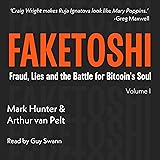The current financial landscape is often characterized by significant uncertainty. For instance, the broader market is presently observed with a Price-to-Earnings (P/E) ratio of approximately 30x, alongside a dividend yield hovering around 1.2%. These metrics, as highlighted in the accompanying video featuring Sven Carlin, can provoke considerable discussion among investors regarding the potential for a market correction or the optimal allocation of capital. Understanding how to navigate such environments, particularly by distinguishing between speculative endeavors and principled investment strategies, is paramount for long-term wealth accumulation.
Historical data indicates that equity markets are inherently cyclical. Periods of significant growth, such as the market’s approximate 10x return over the last fifteen years, have been followed by downturns. Conversely, historical precedents reveal instances where market crashes of 50% have occurred, just as periods of doubling over seven years have been observed. This inherent unpredictability underscores the imperative for a robust investment strategy that remains resilient regardless of market direction.
Navigating Market Volatility: The Imperative of Preparedness Over Prediction
The allure of predicting market movements, often termed ‘calling the big one,’ is a persistent temptation for investors. However, an effective long-term investment strategy is fundamentally built upon preparedness rather than prescience. It is widely acknowledged that forecasting the future trajectory of markets is an exercise fraught with peril; even seasoned professionals readily admit their inability to consistently predict such events.
One common pitfall identified is extrapolation bias, where recent market performance is assumed to continue indefinitely. While historical data provides the only basis for analysis, past performance is not indicative of future results. Therefore, a focus on the fundamental health of one’s portfolio, irrespective of broader market sentiment, becomes a critical defense against cognitive biases that can lead to suboptimal decisions. Investors are encouraged to regularly assess the intrinsic value of their holdings rather than reacting impulsively to market noise.
The Double-Edged Sword of Holding Cash for Market Opportunities
A frequently debated aspect of market crash preparedness is the strategy of holding substantial cash reserves. The premise is often articulated as “holding cash to buy the crash,” a tactic famously associated with figures like Warren Buffett. Indeed, Buffett’s Berkshire Hathaway has recently maintained a significant cash position, reported to be around 35% of its total assets, following strategic divestments from highly valued equities such as Apple.
However, for the average investor, this approach carries considerable risks. Firstly, the erosion of purchasing power due to inflation is a material concern. Even with modest real returns from instruments like 10-year Treasury yields, which might offer approximately 1.5% in real terms, higher inflation can swiftly diminish capital value. A scenario involving elevated inflation over a five-year period could see cash reserves lose up to 50% of their purchasing power, transforming a seemingly safe haven into a source of significant loss.
Secondly, the ability to effectively deploy large sums of capital during a downturn is often contingent on scale. While Berkshire Hathaway manages hundreds of billions, a retail investor’s comparatively smaller capital can be deployed with greater agility into specific, potentially undervalued assets. Moreover, the act of holding cash is itself a prediction that the market will indeed crash, allowing for a timely redeployment. This speculative endeavor, even when undertaken by market titans at specific historical junctures (e.g., 1968, 2000, 2007 for Buffett), introduces an element of market timing that is generally not advisable for most investors seeking consistent long-term returns.
Deconstructing Speculative Assets: Gold, Bitcoin, and Value Investing Principles
Amidst market uncertainties, assets like gold and Bitcoin often emerge as popular alternatives, driven by narratives of store of value or rapid appreciation. Over the last three years, gold has experienced more than a twofold increase in value, while Bitcoin has seen even more substantial gains, often exceeding 5x or 6x its previous levels. Such dramatic movements inevitably fuel a fear of missing out (FOMO) among investors, leading many to consider these assets for diversification or wealth preservation.
From a stringent value investing perspective, however, these assets are often characterized as speculative. Unlike productive businesses, gold does not generate cash flows or dividends, and its valuation is primarily driven by market sentiment, supply/demand dynamics, and its perceived role as a hedge against inflation or systemic risk. Similarly, Bitcoin, while innovative in its technological underpinnings, lacks traditional fundamental drivers such that its price is largely a function of adoption, network effects, and speculative interest. Extensive research into these assets may offer insights into their mechanics, but it does not remove the fundamental uncertainty regarding their future price trajectories.
Consequently, for those committed to a value-oriented investment strategy, an allocation to gold or Bitcoin, if considered, is typically treated as a small, highly volatile component of the portfolio, or even avoided entirely. The primary focus remains on acquiring ownership stakes in fundamentally sound businesses that generate tangible earnings and cash flows, rather than relying on price appreciation fueled by speculative fervor.
The Enduring Relevance of Fundamental Analysis in an Expensive Market
The prevailing market environment, characterized by high valuations, often leads to the concern that “everything is becoming too expensive to own.” While it is true that many asset classes currently trade at elevated prices, this does not negate the importance of fundamental analysis. Instead, it necessitates a more diligent and discerning approach to identifying genuinely undervalued or fairly valued opportunities.
Fundamental analysis involves a deep dive into a company’s financial health, management quality, competitive advantages, and long-term prospects. This rigorous evaluation helps investors understand the intrinsic value of an asset, independent of its fluctuating market price. During periods of high market P/E ratios and low dividend yields, the ability to pinpoint businesses with robust fundamentals, even if they are fewer in number, becomes a significant advantage.
A cornerstone of this approach is the focus on assets that provide strong dividend yields, especially those from businesses with defensible competitive moats and stable cash flows. While the broader S&P 500 might offer a modest 1.2% dividend yield, targeted opportunities may exist where dividend yields of 8% or 9% are achievable from high-quality companies. These “quadrant” investments, as discussed in various value investing circles, offer not only a current income stream but also a buffer against market downturns, as dividends can be reinvested to acquire more shares at potentially lower prices, compounding wealth over time.
Adapting Investment Strategy Across the Life Cycle of Interest Rates
The prevailing interest rate environment significantly influences asset valuations and, consequently, investment strategies. Periods of high interest rates, such as the 15-20% rates observed in 1982, were followed by decades of declining rates. This sustained decrease contributed significantly to the immense appreciation in asset prices, with the stock market seeing an approximate 50x return since that era. However, the current era of very low interest rates means that asset prices are generally elevated.
A resilient investment strategy must therefore be adaptable across this investment life cycle. It should perform adequately in both low-interest-rate, high-asset-price environments and in scenarios where interest rates are rising or declining. The focus shifts from merely riding the wave of declining rates to strategically positioning a portfolio that can weather various economic conditions. This often involves prioritizing businesses with strong cash flow generation, low debt, and a proven ability to return capital to shareholders through dividends or share buybacks.
Ultimately, a sound **investment strategy** acknowledges the unpredictability of market crashes, the risks associated with speculative assets, and the corrosive effects of inflation on cash. It is rooted in a disciplined commitment to fundamental analysis and the patient accumulation of ownership in high-quality, dividend-paying businesses. This approach provides a pathway to compounding wealth, irrespective of short-term market fluctuations or the broader economic cycle.







